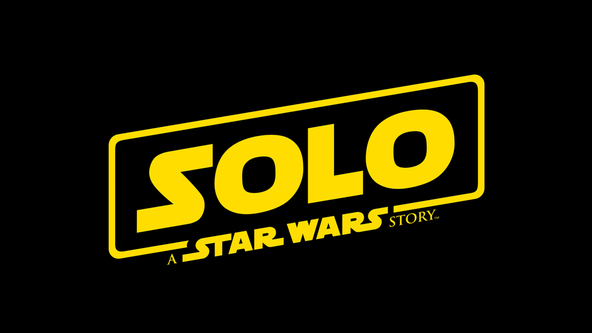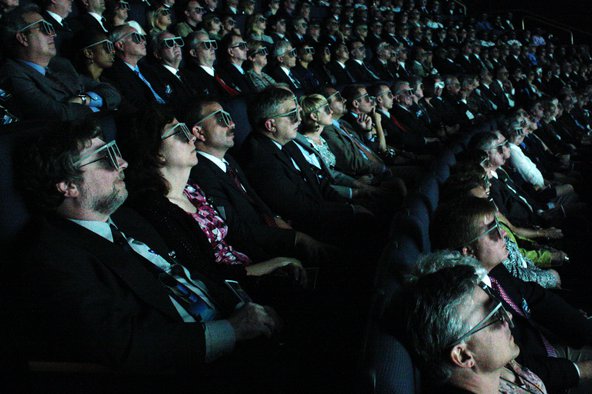The Force is strong with 3D cinema
by Dr Nick Jones
3 May 2018
This blog is part of our Summer Showcase series, celebrating our free festival of ideas for curious minds.
Solo: A Star Wars Story, released in May 2018, was the fifth Star Wars film to get a 3D release – even though this 40-year-old mega-franchise only adopted 3D in 2012. Indeed, as with every summer for the last nine years, the next few months will see a series of blockbusters released into cinemas in 3D. Avengers: Infinity War, The Incredibles 2, and Jurassic World: The Fallen Kingdom are all being shown in this format, and the consistency across these films is striking: all are heavily marketed, extremely expensive sequels, containing a wealth of computer-generated imagery. In this way, they underline an equivalence between 3D and costly digital spectacle that was already in place with the first major blockbuster of the digital era, Avatar.

A key part of cinema’s economy of spectacle
3D is a key part of contemporary cinema’s economy of spectacle, although it is by no means essential. Audiences can choose to see their favourite superhero’s latest adventure in either 2D or 3D. The latter carries a (marginally) higher ticket price and demands the wearing of polarised plastic glasses, but the viewer will be repaid with dimensional sensations: not just objects coming out of the screen, but recessive, immersive space, as well as a sculptural sense of presence.

For Hollywood studios, 3D works as another way of ensuring the importance and uniqueness of the cinematic release, a task it has been fulfilling since the 1950s, when it was employed on a large scale as a way of pulling mass middle-class audiences away from the television sets newly installed in their living rooms. This dichotomy persists – 3D may have been bundled as a feature of many flat-screen televisions in the early 2010s, but few consumers actually used it, and dedicated scheduled 3D channels from Sky and the BBC were short-lived. For many people, 3D simply doesn’t live at home – instead, it goes hand-in-hand with IMAX and other large format projection, a way of making the film bigger, the experience stronger (and the studio’s profits larger).
Riding the wave of science fiction kitsch and franchise filmmaking
In the opening scenes of last year’s Star Wars: The Last Jedi, X-wings and TIE fighters zip through space in ways that make the most of 3D’s expanded spatial continuum; Solo looks to continue this trend, with a Kessel run through a swirling atmospheric vortex. Such scenes link 3D with dynamic, propulsive camera movements and epic, dense environments that could only be rendered digitally. Avengers: Infinity War may be crammed with characters, but the extra spatial terrain of 3D gives them each slightly more room to breathe, and the film luxuriates in giddy vertigo and villains looming threateningly off the screen.

It’s no coincidence that Hollywood, 3D, and digital spectacle all explicitly coalesce in this way. In the 1950s, the format was synonymous with exploitation and genre cinema like House of Wax and Creature from the Black Lagoon; in the 1980s, 3D returned to prominence, but was again connected to films with a somewhat schlocky reputation, such as Jaws 3 and Friday the 13th Part 3. Today, though, science-fiction kitsch and franchise filmmaking have fused in the form of the digital blockbuster, and 3D is along for the ride. Moreover, the way these films are produced make them ideal for 3D exhibition – unlike earlier moments of 3D, digital 3D can be rendered after the fact. This means that today 3D is no longer a method of filming, but a postproduction technique. Containing endless effects shots, and subject to extensive post-production, films like Solo and Infinity War are the pinnacle of digital processing, and their 3D is another special effect, a visual illusion generated through computer software and endless hours of labour in front of computer screens.
The power of 3D films in foreign markets
3D spectacle also helps these films travel. Foreign markets, and particularly China, are increasingly vital for Hollywood films (indeed, these films are often financed by global corporations and designed for global markets, so calling them ‘Hollywood films’ is increasingly untenable).

In 2014, Transformers: Age of Extinction made history by being the first blockbuster to earn more money in China than the domestic US/Canadian market; much of this box office came from 3D showings. The global nature of film distribution is often blamed for dumbing down mainstream cinema – cultural nuance and witty dialogue do not necessarily translate well, whereas expensive digital imagery and spectacular 3D effects need no translation. (Star Wars has struggled to find this kind of audience in Asia, and so production company Disney will be hoping that Solo is received by these audiences as a flashy 3D space adventure more than yet another piece of an unfolding saga.)
Cultural nuance and witty dialogue do not necessarily translate well, whereas expensive digital imagery and spectacular 3D effects need no translation
A visible trace of deeper change in twenty-first century media
3D is not the purview of Star Wars sequels and superhero franchises alone, and the last few years have witnessed the release of various dramatic experiments in 3D, the most notable being 2015’s Love and 2016’s Billy Lynn’s Long Halftime Walk (neither of which were widely released in the format in the UK). Nonetheless, summer 2018 reveals 3D’s entrenchment with digital effects. This correlation is unsurprising – as my research for the British Academy has discovered, and as I will show in more depth at the Academy’s summer showcase, cinematic 3D is a visible trace of wider, deeper changes to images, media, and space in the twenty-first century. So, for all that the 3D of Han Solo’s origins may appear to be just an additional bit of spectacle we can take or leave like our popcorn or our VIP seating, it actually points to the way contemporary cinema works, and its relationships with other technologies and visual cultures.
Dr Nick Jones is a Lecturer in Film, Television and Digital Culture and the University of York. His PhD explored the way space is represented in contemporary action cinema, and a revised version of this was published in 2015 as Hollywood Action Films and Spatial Theory (Routledge). He is currently working on digital 3D cinema, investigating the importance of this exhibition format in a digital context, and finding ways to describe 3D aesthetics in ways that are not beholden to 2D models of cinema analysis. This research incorporates analysis of 19th-century visual culture, contemporary VR and other new media, and modes of digital effects production.



